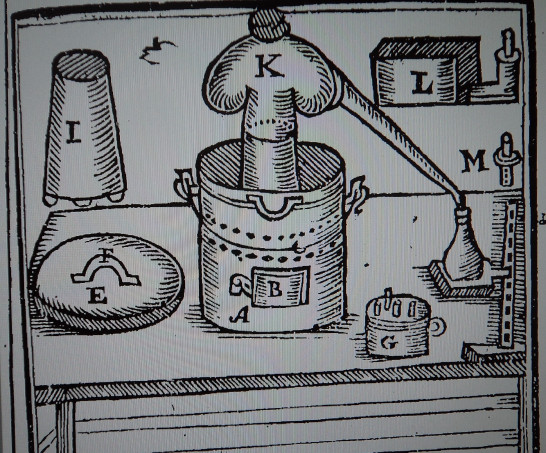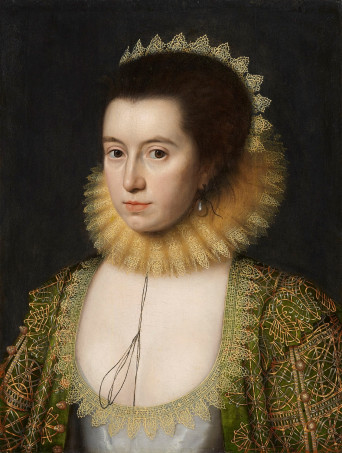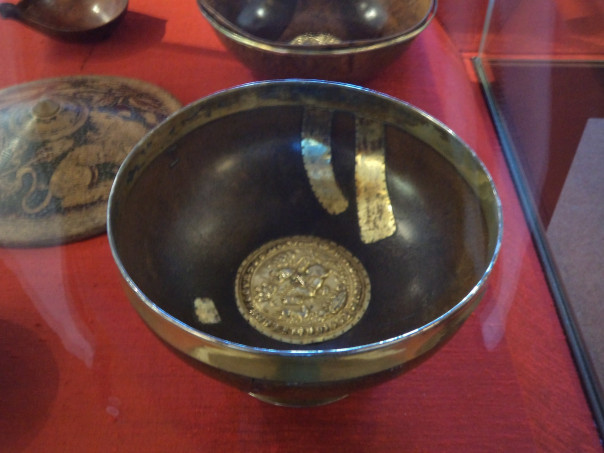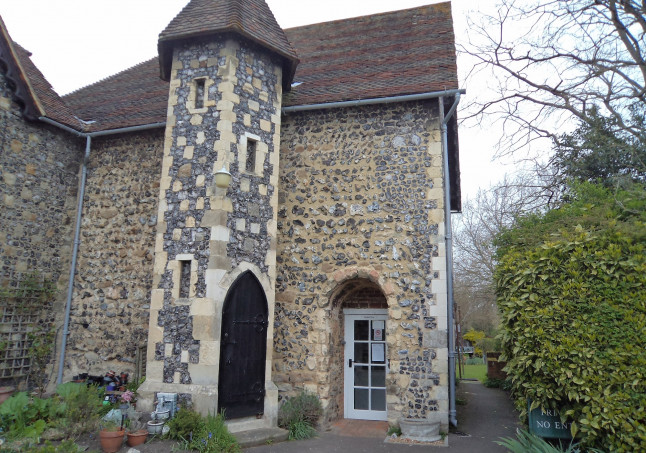Before I get to Tudors & Stuarts 2023, as well as Dr John Williams’ FCAT/CKHH lecture, an exciting meeting that took in TWO medieval hospitals, while Dr Diane Heath took delivery of more materials for her ‘Green Dragons’ project this week and she with her ‘Beastly Latin‘ group were busy on the Bestiary ‘Ant’, I thought I would draw your attention to the ‘Church, Saints and Seals, 1150–1300’ study day at Canterbury Cathedral on Saturday 11 March. For as well as hearing talks from distinguished speakers such as Professor Sandy Heslop and Dr Lloyd de Beer in the morning, there will be a chance to visit both the Cathedral Archives and Conservation Studio. If this sounds of interest to you, please see: https://www.canterbury-cathedral.org/what-s-on/events/11march23-church-saints-and-seals-1150-1300/ for details and how to book.
As we are now just two months away from Tudors & Stuarts 2023 on Friday 28 April to Sunday 30 April, I thought I would mention a few more of the talks for what I believe will be a truly exciting weekend: https://www.canterbury.ac.uk/tudors-stuarts . Having just sent in details to Visit Kent (and Canterbury), I was again looking at the range of speakers who will be coming under the theme ‘Social History’. For as well as Dr Onyeka Nubia, whom some of you may have seen recently with Alice Roberts on the BBC’s Digging for Britain series 10 programme, we will be welcoming Dr Elaine Leong who will explore some 17th-century devices as she reflects on contemporary ideas about the body, the place of medical entrepreneurship and everyday technologies in early modern healthcare.

Although less the everyday, or at least hopefully so for the vast majority of 16th-century people, I’m similarly fascinated by Professor Steven Gunn’s findings from coroners’ inquests into accidental death. Indeed, I used his database for the blog last week as well as for a short piece in the Lossenham Project monthly newsletter. For us in April, Professor Gunn will delve much further into the Tudor Kent evidence to investigate a range of hazards, from common ones like driving carts and playing football, to more location-specific ones linked to the county’s landscape and economy, whether it is its saltmarshes, oyster creeks, fruit trees or blast furnaces.
Taking another of the 5 themes: ‘Kings and Queens’, for those interested in Henry VIII and his children, chronologically on the Saturday we’ll be moving from Professor Richard Hoyle’s exploration of Henry’s failure to generate a male heir in the first quarter century of his reign to Amy Licence’s assessment of the reign of his daughter Mary, the only surviving child of the king’s first marriage. In this second talk, Amy will examine Mary’s marriage to Philip of Spain that, too, failed to produce the monarch’s desired male heir. And she will explore question like: what did each make of the other? How was the relationship between them established in their early days together? What challenges to the traditional gender dynamic did their union pose?
Keeping with female Tudor monarchs, but moving to those who were close to them at court, Professor Jessica Malay will investigate the life of a courtier through the experiences of a young Anne Clifford who was involved in the court life of first Elizabeth, then James I and finally Charles I. For under the guidance of her mother Margaret Countess of Cumberland and her aunt Anne, Countess of Warwick she was introduced to the role of an aristocrat in such surroundings, important lessons that remained with her when she finally inherited her vast northern lands to become in many ways ‘Queen of the North’.

Our final speaker in this strand, Professor Maria Hayward, will take us to the court of Charles II and the life of Nell Gwyn, who gained fame and notoriety as an actress on the Restoration stage and as a royal mistress. As an expert on early modern textiles and clothing, especially in the context of the Tudor and Stuart courts, Professor Hayward is ideally placed to show us how Nell Gwyn used clothing, as well as other aspects of material culture, to create for herself a space in the ‘Merry Monarch’s London society.
Our other themes are ‘War & Politics’, ‘The Church’ and ‘Books & Manuscripts’, consequently, if any of these also sound exciting, please do explore the full programme, and here is the link again at https://www.canterbury.ac.uk/tudors-stuarts and we shall be delighted to welcome you to Canterbury at the end of April. Furthermore, Craig Dadds and his team at the Canterbury Christ Church University Bookshop have a special ‘bookshelf’ at: https://bookshop.canterbury.ac.uk/canterbury-history-weekend-2023 and will have a bookstall during the Weekend at Old Sessions House.
Moving on, this week I went over to Eastbridge, otherwise the medieval pilgrim hospital dedicated to St Thomas of Canterbury, to meet Louise Knight, Clerk and Receiver. This gem of a late 12th-century building at its core is again open to visitors and offers a fascinating insight into the role of pilgrimage during one of the most important periods in the city’s history. Moreover, as a way of providing even greater knowledge and understanding of the place of medieval hospitals in Canterbury’s long history, Louise and I then headed over to another medieval hospital in Northgate, St John’s. This, like St Nicholas’ hospital at nearby Harbledown, pre-dates Eastbridge by about a century, having been founded by Archbishop Lanfranc, whereas St Thomas’s was founded around 1180 by a layman called Edward son of Odbold, a wealthy merchant who was a considerable property holder in this part of the city.
At St John’s we went to see Robyn Dye, the General Manager, because I was keen for Louise to see some of the medieval artifacts owned by St John’s which in the past, I have been able to show those on guided visits to St John’s as part of the Medieval Canterbury Weekends run by the CKHH. St John’s, unlike Eastbridge, is not open to the public and it would be brilliant to be able to tell more people about its and St Nicholas’ history through their material culture by showcasing such objects at Eastbridge.

Among the artefacts at St John’s are two wooden collecting boxes, one hand-held that looks a bit like a medieval shoe with a hinged lid and another that looks somewhat like a small barrel with a chain, perhaps a means to fix it to a wall. At St John’s there is also another small wooden object that Louise thought looks a bit like something used to collect and test honey (stop press, we now know it wasn’t but was a container for silk thread) and we know there were beehives there during Elizabeth’s reign. For among the brothers at St John’s was Anthony Allen, who wished, in 1560, that most of his livestock would pass to his wife and son. His wife may have left the family home to move into his house at the hospital after his death, possibly bringing with her the poultry he had bequeathed to her. She certainly inherited all his household goods at St John’s and one of the swarms of bees, which were to be installed there in their hive. The other two swarms and their hives were to become the property of the hospital for the benefit of its community.
Although this potential loan of objects between these hospitals is still being worked out, I’m looking forward to seeing it take place. For in addition to these pieces at St John’s, it would be excellent if one of the Lanfranc hospitals’ mazer bowls, currently on loan to the Beaney and probably now in storage since the axing of the Canterbury Heritage Museum, could similarly be displayed at Eastbridge to offer additional light onto the development of these institutions in the Middle Ages, St John’s a hospital for the poor and infirm and St Nicholas’ for lepers.

Finally, going even further back in time, John Williams treated us to a fascinating FCAT/CKHH talk on what he sees as the relationship between Offa and Charlemagne as manifested through the building of great hall and grand church complexes. These were in stone in Carolingian Europe, while for Offa this had involved a move from timber to stone, something John believes can be seen from the archaeological excavations at Northampton where a very substantial and sophisticated timber hall with associated buildings was replaced around 800 by a similarly remarkable stone hall. Indeed, it was this excavation that started his fascination with this relationship that has taken him not only to Aachen but to Ingelheim, Paderborn, Frankfurt and Doue-la-Fontaine, among other places, as he has traced how these urban settlements developed in the 8th and 9th centuries. Thus, John took his audience on a tour of some of the grandest early medieval buildings, where they have survived, and their sites where they haven’t, to build a picture of how royal power and authority were displayed in both secular and religious terms. All of this was extremely interesting, but John also provided a further angle on this history by giving us insights into the use during this period of mortar mixers. The sites of these mixers have now been discovered across much of Europe, including at Northampton, and the technology has been replicated through experimental archaeology, thereby demonstrating how much more efficient they were than mixing mortar by hand. Consequently, for those who were at his lecture they were treated to an excellent presentation that gave much food for thought, and personally I was especially pleased having several decades ago done my undergraduate dissertation under the title ‘Offa of Mercia: a gifted ruler with European expectations’.
 Centre for Kent History and Heritage
Centre for Kent History and Heritage Sheila Sweetinburgh
Sheila Sweetinburgh 1656
1656

